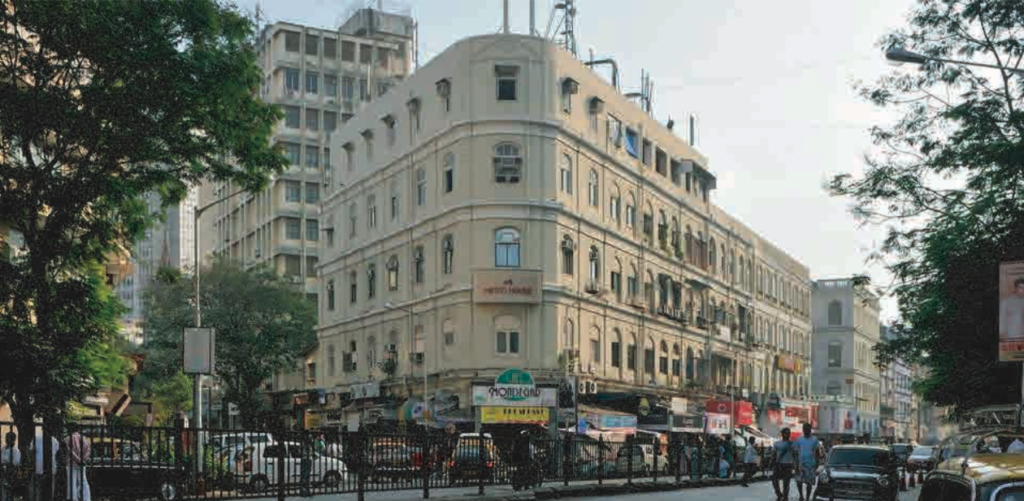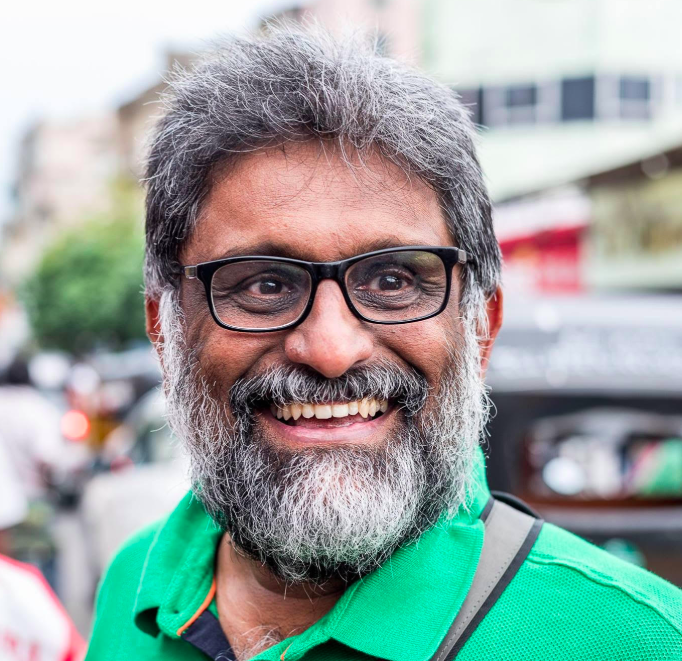How does Bombay slow down at the end of a manic day? A perch in Colaba can give you a first-hand experience.
Men and women double pace to the bus station round the bend at the National Gallery of Modern Art (NGMA). Two taxi drivers drag on their cigarettes under the avenue trees and converse loudly.
And the sea breeze breaches the Gateway of India, as if fighting the day’s pollution.
When Rashid-bhai drops me at YWCA International Guest House on Madame Cama Road, one of my many ‘second’ homes across the country, I feel light. I prefer the single bedroom with a balcony and a great view. Fernandez at the front desk is accommodative.
I order a pot of tea and let the evening slip slowly.
Colaba lives in times past rather comfortably, even as it keeps pace with Mumbai’s people. The evening walk takes me to the other end of Azad maidan, where a few hundred cricket players are into the final phase of matches. I stretch out on the grass and watch aimlessly across the maze of flannels.
I skip dinner at the Y and walk down to Cafe Mondegar, one of the iconic watering holes of Colaba.
Tourists have this place marked out on their brochures though many prefer now to walk further down to sit at a table at the Leopold Cafe where travelers and newbie Mumbaikars share colorful anecdotes of the Mumbai shootings of 26/11. Leopold was the theatre of one of the gunfire – the gunshot wounds on the walls are still preserved between framed posters of the 50s and 60s.
Colaba’s sidewalks are made for walking, sidestepping the hawkers.
Regal of yore
‘Gully Boy’ was playing at Regal Cinema. The film, starring Ranveer Singh and Alia Bhatt unravels a facet of Mumbai we haven’t seen much – its native rappers and the music they create in the gullies of the city.
I had watched ‘Gully Boy’ the week it was released, but I hadn’t experienced an art deco cinema hall like Regal which has survived the multiplex wave across India.
In minutes, the tickets were sold out.
“Best place to see movies,” the 50-something Akash told me at the box office counter. “It is grand and the tickets are affordable.” I stepped into a wooden lift that could hold three-and-a-half people to access the gallery. Regal is more like an auditorium for classical music concerts, and since ‘Gully Boy’ is more music and poetry of the streets, it held my attention until the interval. It was time for fresh air at the round-tana where hawkers of tea and vada-pav were spraying their tables with water.
A day’s work in Colaba
Your Colaba mornings can be well spent at three sprawling campuses. The National Gallery of Modern Art, which appears a tad tired now, the Chhatrapati Shivaji Maharaj Vastu Sangrahalaya Museum, and the Jehangir Art Gallery.
If ‘people-watching’ engages you, find a perch in this area and keep watching. You may be joined by a young artist for a chat.
This place is some sort of tourist movement hub; throughout the day overloaded buses screech to long halts, and disgorge scores of people who first gorge on vada-pav, and then walk invariably into the museum or towards the Gateway of India.
I walk off to another Colaba destination – Phillips Antiques, a 19th century heritage.
Behind heavy doors are fierce wooden horses, paintings of buxom women and cold bronzes at this place for antiques and collectibles. I check out the section that holds prints of colonial India maps and vintage photographs. An aged Parsi woman walks up to me, slowly, keen to help.
Madras is on my mind, I tell her. She goes away and returns with two metal print artworks of Fort St. George. 7500 bucks for each. Peering at them is free of course. I do just that, make an excuse and step out. A hawker is making masala chai down the sidewalk – I can smell it.
I carry an intention to the Gateway of India waterside one evening. A suited young man tries to sell me a boat trip to a floating restaurant out at sea. The menu card doesn’t impress me. And I don’t want to spend my evening with strangers. I gaze at the Taj Mahal Palace at Apollo Bandar. I have read that a seat at its bar (or it is a coffee place) offers great sights of the Arabian Sea where the ships and boats have switched on the twinkle show. I don’t intend to challenge the hotel’s doorman – I am in my khaki shorts.
I take a long walk – towards another Colaba landmark of ol’ times – The Bombay Presidency Radio Club. Its history draws me there. In 1929, a note says, the club installed Bombay’s first radio set fitted to a giant aerial.
I walk alongside three young men who carry lit-boards that advertise a furniture sale in the city.
“Are there any old radios exhibited in the lobby?” I ask the heavy-set security man. “I think there is but come in the morning,” he waves me off as a Merc rolls in.
I am in the mood for a drink. And it must be Colaba’s own hangout. A quick online search and my taxi drops me at the edge of a market. Clothes, electronics, vegetables and fruits and vada pav.
“Sujatha Lunch Home kahan hai?”
The vada pav hawker waves his right hand to the opposite side.
I find a table close to the cash counter cum liquor chest cum altar for the Gods. The man at the counter launches into an animated conversation in Tulu on his handphone. It reminds me of the era of the migrants from coastal Karnataka who have made their lives in Mumbai.
The tables for diners are stacked close. A staircase takes clients to a modified upper floor. This is a no-frills bar where your drink arrives in two minutes. I order for rum, a cola and a Bangada fry. And while I sip on the rum mix for the next 40 minutes, I watch Colaba’s market life ebb into the night.
The possibility of a fish-pav
I should have been up at 5 a.m. for my final exploration of Colaba. A taxi drops me at the imposing arch of Sassoon Docks at 8. Scores of men and women are carting out fish auctioned inside. This board says ‘Welding Works’, but the men are hammering large blocks of ice on one side, and on the other, a few are skinning big fish on the wet floor.
Mini vans stocked with greens and vegetables kick off their sales – making it easy for fisherwomen to shop for the day on their way home. The sun shows up Mumbai’s ironic sides – 20-storeyed apartment blocks looking down on a filthy bay where dozens of large fishing vessels are parked. On water’s edge, decaying walls of an old textile mill that was destroyed in a fire are vestiges of old Colaba.
The last of the auctions of the day’s catch is on. I sight a basketful of large Sting Rays and my mind goes back to mum’s spicy hot curry of the Ray, Mangalorean style.
I look around to see if a hawker is offering fried fish pav!
Groups of women clean heaps of prawns and pack them into boxes laced with ice cubes. Others are making quick deals with Mumbaikars who head here to shop for fresh seafood.
“Eight men manage this boat,” a fisher tells me as I take a close look at one vessel which came in the previous night.
I head to a restaurant. It is a ‘Hindu’ one – so says its signboard. The tables are full, men tucking in dosa and pav.
I order for ‘cutting’ chai and open the day’s newspaper. I wish this place offered fish-pav. Colaba may well trigger a new food fad for Mumbai.


 [/column]
[/column]